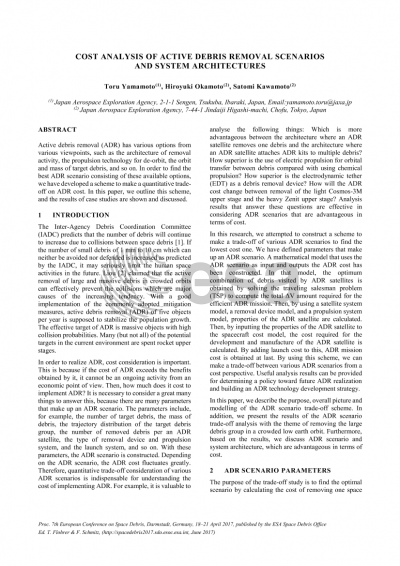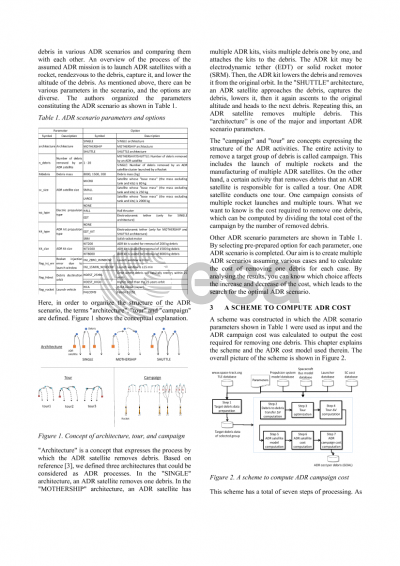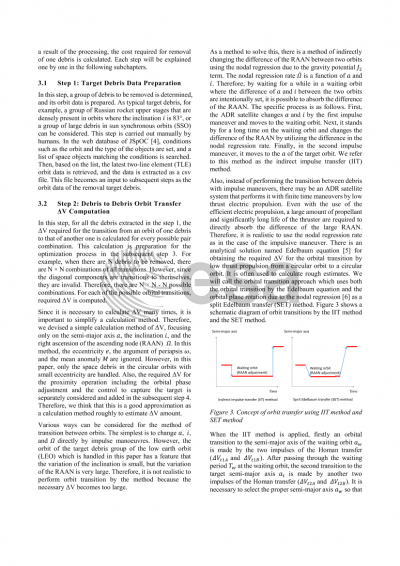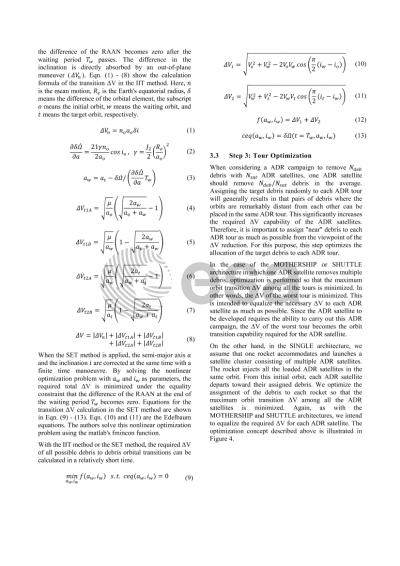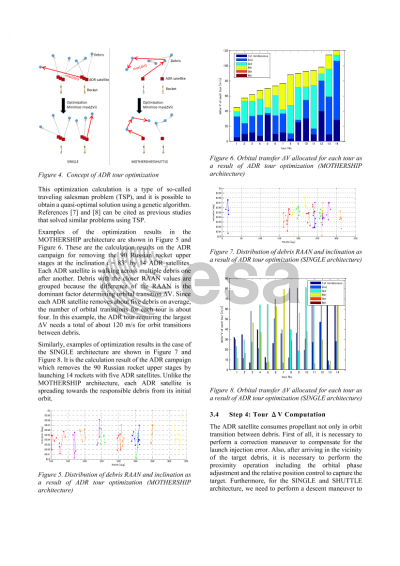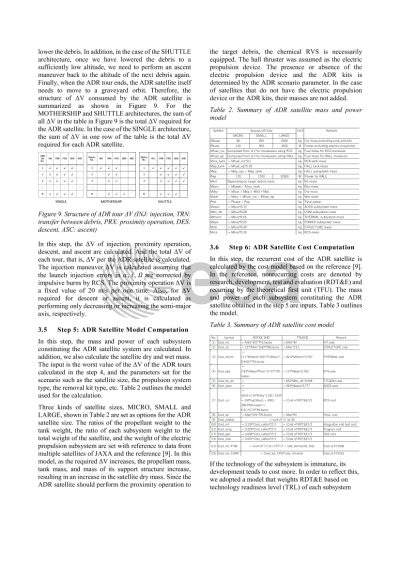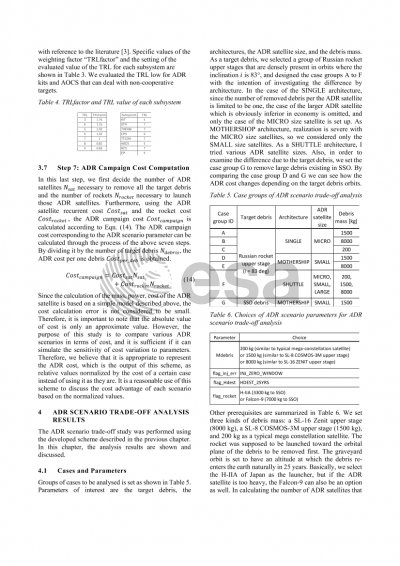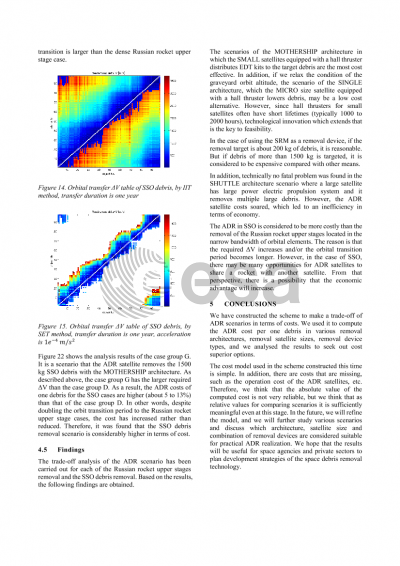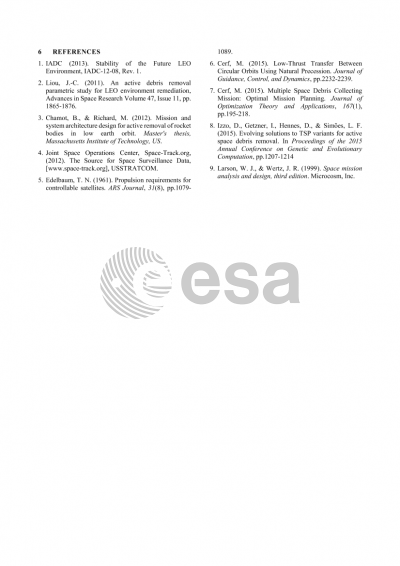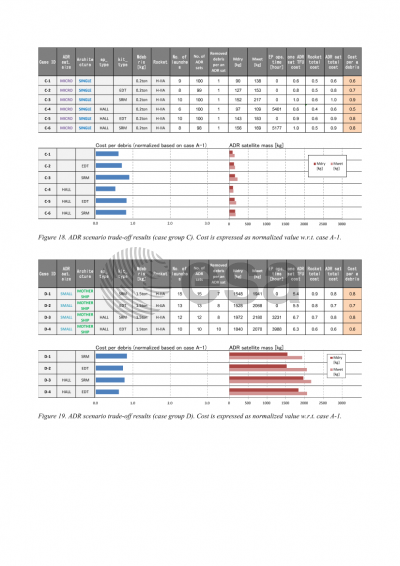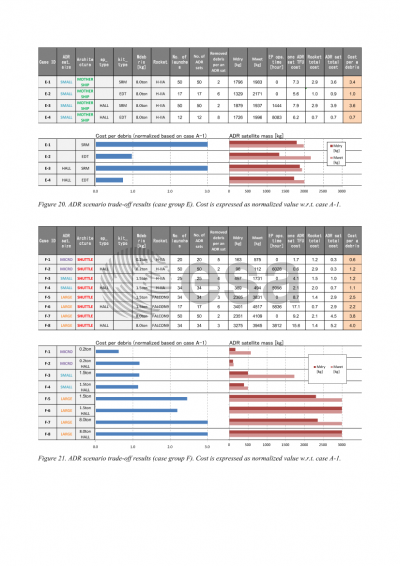Document details

Abstract
The Inter-Agency Debris Coordination Committee (IADC) predicts that the number of debris will continue to increase due to collisions between space debris. If the number of small debris of 1 mm to 10 cm which can neither be avoided nor defended is increased as predicted by IADC, it may seriously limit the human space activities in the future. Many researchers have found that active debris removal (ADR) of large debris existing in the crowded orbit, which have high probabilities of colliding with other debris and becoming sources of a large amount of small debris, is effective.
In order to realize ADR, cost consideration is important. This is because if the cost of ADR exceeds the benefits obtained by it, it can not be an ongoing activity from an economic point of view. Then, how much does it cost to actually implement ADR? In order to answer this, it is necessary to consider a great many things, because there are many parameters that make up the ADR scenario. The parameters include, for example, the number of target debris, the mass of debris, the trajectory distribution of the target debris group, the number of removed debris per an ADR satellite, the type of removal device and propulsion system, and the launch system, and so on. With these parameters ADR scenario is constructed. Depending on the ADR scenario, the ADR cost fluctuates greatly. Therefore, quantitative trade-off consideration of various ADR scenarios is indispensable for understanding the cost of implementing ADR. For example, it is valuable to analyze the following things: Which is more advantageous between the architecture where one ADR satellite removes one debris and the architecture where one ADR satellite attaches ADR kits to multiple debris? How superior is the use of electric propulsion for orbital transfer compared with using chemical propulsion? How superior is the electrodynamic tether (EDT) as a debris removal device? How will the advantage of EDT change between removal of the light COSMOS-3M upper stage and heavy Zenit upper stage? Analysis results that answer these questions are effective for examining ADR scenarios that are advantageous in terms of cost.
In this research, we attempted to construct a scheme to quantitatively trade off ADR scenarios to search the lowest cost one. We have defined a number of parameters that make up the ADR scenario. With the contents of the ADR scenario as input, we constructed a mathematical model that outputs ADR cost. In that model, the optimum combination of debris visited by the ADR satellites is obtained by solving the traveling salesman problem and the total ?V amount required for the ADR mission is calculated. Then, by using the satellite system model, the removal device model, and the propulsion system model, the properties of the ADR satellite are calculated. Then, by inputting the properties of the ADR satellite to the spacecraft cost model, the cost required for the development and manufacture of the ADR satellite is calculated. By adding rocket launch cost and satellite operation cost, ADR mission cost can be obtained. By using this scheme, we can trade off various ADR scenarios from a cost perspective. Useful analysis results can be provided for determining the policy of the ADR scenario and building the ADR technology development strategy.
In this paper, we describe the purpose, overall picture and modeling of the ADR scenario trade-off scheme. In addition, we present the result of trial of ADR scenario tradeoff with the theme of removing the large debris group in the crowded low earth orbit. Furthermore, based on the results, we discuss ADR scenario and system architecture, which are advantageous in terms of cost and feasibility.
Preview
